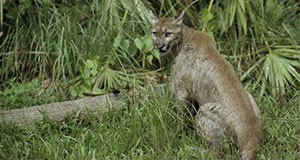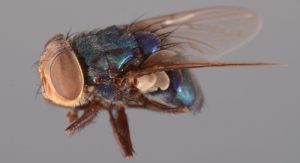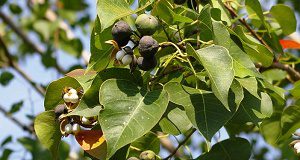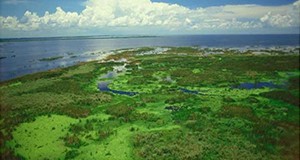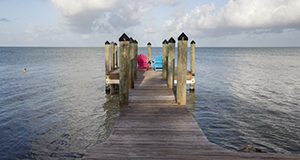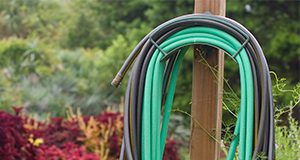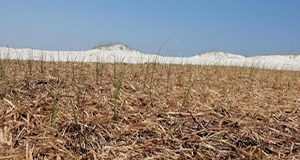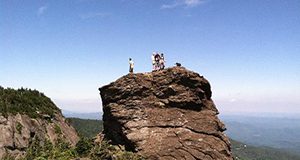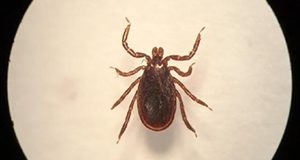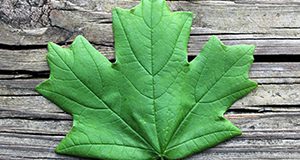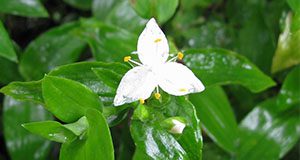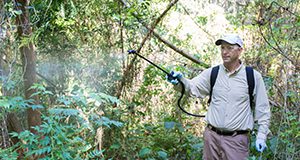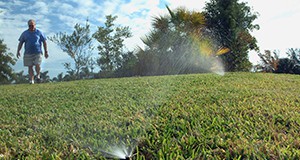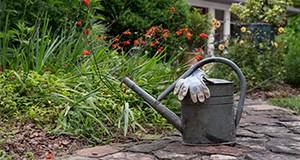Endangered Florida panthers live and breed on state and federal lands in south Florida, but they are a wide-ranging species, and the habitat available to them on public lands is not enough for them to thrive and recover. The 2008 Panther Recovery Plan by the US Fish and Wildlife Service requires that habitat for the panther be conserved on both public and private lands throughout the state. Private rangelands in southwest and south central Florida provide important habitat and prey for the Florida panther. These lands also play a key role in conserving other native species like gopher tortoises, bob white quail, turkeys, deer, vultures, scrub jays, cranes, black bears, and bobcats. Unfortunately, these rangelands are under increasing development pressure as the human population in Florida continues to grow. Multiple policy approaches have been put in place by local, state, and federal governments to address habitat loss and secure natural resources in Florida for our panthers. This 5-page fact sheet written by Elizabeth F. Pienaar and Melissa M. Kreye and published by the Department of Wildlife Ecology and Conservation provides a brief overview of existing regulatory and voluntary approaches to help conserve the Florida panther on private lands.
http://edis.ifas.ufl.edu/uw413
Category: Environment
Considerations for Building Climate-Based Species Distribution Models
Climate plays an important role in the distribution of species. A given species may adjust to new conditions in-place, move to new areas with suitable climates, or go extinct. Scientists and conservation practitioners use mathematical models to predict the effects of future climate change on wildlife and plan for a biodiverse future. This 8-page fact sheet written by David N. Bucklin, Mathieu Basille, Stephanie S. Romañach, Laura A. Brandt, Frank J. Mazzotti, and James I. Watling and published by the Department of Wildlife Ecology and Conservation explains how, with a better understanding of species distribution models, we can predict how species may respond to climate change. The models alone cannot tell us how a certain species will actually respond to changes in climate, but they can inform conservation planning that aims to allow species to both adapt in place and (for those that are able to) move to newly suitable areas. Such planning will likely minimize loss of biodiversity due to climate change.
http://edis.ifas.ufl.edu/uw420
Primary Screwworm Cochliomyia hominivorax (Coquerel) (Insecta: Diptera: Calliphoridae)
In October of 2016, the United States Department of Agriculture confirmed that the primary screwworm, also called the New World screwworm, has returned to Florida. The fly was found infesting Key deer on Big Pine Key. Key deer are an endangered species found only on the Florida Keys, and unfortunately several have died from the 2016 screwworm infestations, but the screwworm is not only a problem for deer and other wildlife. The pest poses a serious threat to all warm-blooded animals, including livestock, pets, and people, and it cost the US livestock industry billions of dollars before it was finally eradicated decades ago. This four-page fact sheet provides more information about this dangerous pest and how to spot it, as well as what to do and whom to contact if you suspect an infestation in your livestock or pets or in a wild animal. Written by Phillip E. Kaufman, Samantha M. Wisely, and Jennifer L. Gillett-Kaufman and published by the Entomology and Nematology Department.
If you suspect an infestation of screwworms in an animal, do not move the animal (to prevent spreading the infestation). Call 1-800-HELP-FLA (1-800-435-7352) inside Florida. Non-Florida residents should call (850) 410-3800.
http://edis.ifas.ufl.edu/in1146
Control Biologico Clasico de la Batata Aerea en la Florida
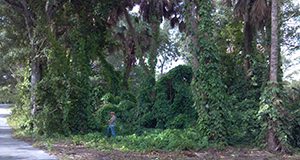
La batata aérea (Dioscorea bulbifera) es una enredadera herbácea y perenne que puede alcanzar longitudes de 20 metros o más, permitiéndole cubrir y ahogar a la vegetación nativa. En 1999, la batata aérea fue reconocida como un transformador de comunidades de plantas por el desplazamiento de especies nativas, cambios en la estructura de las comunidades y alteración de funciones ecológicas.
This is the Spanish language version of Classical Biological Control of Air Potato in Florida. Written by T. D. Center, W. A. Overholt, E. Rohrig and M. Rayamajhi and published by the UF Department of Entomology and Nematology, May 2016.
http://edis.ifas.ufl.edu/in1132
Controlling Invasive Exotic Plants in North Florida Forests
Of the more than 4,000 known plant species growing in Florida, approximately 30% are not native to Florida or the Southeast, and in the US invasive exotic species cost an estimated $120 billion each year in damages. Early detection and removal of invasive plants is the key to successful management. This publication describes many of the current methods used in north Florida forest operations to manage invasive exotic plants. It also provides references for additional sources of information. Written by Chris Demers, Patrick Minogue, Michael Andreu, Alan Long, and Rick Williams.
http://edis.ifas.ufl.edu/fr133
New World Screwworm topic page
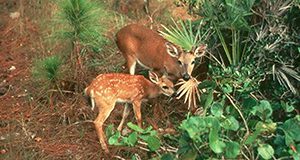
New World Screwworm is the subject of a USDA alert October 3, 2016. A new EDIS topic page directs searchers to authoritative information sources or the IFAS home page (www.IFAS.ufl.edu) for additional information as it becomes available.
External Links
Natural Climate Variability Can Influence Cyanobacteria Blooms in Florida Lakes and Reservoirs
During the summer, many of Florida's nutrient-enriched lakes and reservoirs experience proliferations of cyanobacteria commonly called “blooms.”. Cyanobacteria are natural in Florida lakes and reservoirs, but when they grow to high levels and bloom, they become a big problem. They look awful, smell bad, and can poison fish and other animals in the water. To help resource managers considering costly remediation projects or evaluating the effectiveness of nutrient reduction strategies to manage the problem, this 7-page fact sheet presents the results from 15 years of studies observing three large, nutrient-rich lakes in Florida (Lake Harris, Lake George, and Lake Okeechobee) to study the relationship between rainfall and cyanobacteria blooms and learn causes of year-to-year bloom variability. Written by Karl E. Havens, Mark V. Hoyer, and Edward J. Phlips and published by the Florida Sea Grant College Program
http://edis.ifas.ufl.edu/sg142
Planning for Recreational Waterway Access in Rural Coastal Settings
Increasing demand for waterfront land throughout the United States is a long-term trend with a profound impact on the public's ability to access coasts and waterways for recreation. Overcrowding at beaches, boat ramps, and popular destinations in Florida's densely populated coastal areas leads more Floridians and tourists to consider recreating in rural coastal communities that still offer the solitude and natural settings desired by many. According to a recent report sponsored by the Outdoor Industry Association, the provision of public water access has increased outdoor recreation tourism, which could bring much-needed economic benefits to rural areas. However, many of these communities lack planning resources to measure local support and user needs and to estimate the benefits that investments in public-access infrastructure might bring. This 6-page fact sheet written by Corina Guevara, Charles Sidman, Robert Swett, and Alan Hodges and published by the Florida Sea Grant College Program describes an approach those communities can use to characterize user needs and to quantify local economic benefits derived from public-access infrastructure with a focus on boat ramp facilities.
http://edis.ifas.ufl.edu/sg141
Engaging High Water Users in Water Conservation #3: High Water Users' Opportunities to Learn about Water Conservation
Homeowners who use excessive amounts of water to irrigate their landscapes have specified demographic characteristics and have been identified as high water users. This three-page fact sheet is the third in a series discussing how Extension can improve high water users' engagement in water conservation, focusing on how to effectively communicate with high water users about water conservation education. Written by Pei-wen Huang and Alexa J. Lamm and published by the Department of Agricultural Education and Communication.
http://edis.ifas.ufl.edu/wc257
Building Coastal Dunes with Sea Oats and Surrogate Wrack
Perennial coastal grasses such as sea oats have long been recognized as the biological engineers of our increasingly stressed beaches and coastal dunes. Sea oats build dunes by capturing blowing sand and stabilizing it, and they’re often planted after dunes have been eroded, fragmented, or destroyed. Managers have tried commercial fertilizers and water-absorbing gels to ensure planted sea oats survive and thrive, but these products are not always effective and can be expensive. Removal of natural beach litter, called “wrack” and defined as “algae, grasses, driftwood, fruits, seeds, and carrion, along with cultural litter,” has frequently had the undesired effect of weakening the establishment and growth of sea oats. A relatively cheap and effective method to restore them is to reproduce the beneficial effects of this beach litter with “surrogate wrack.” This 4-page fact sheet written by Natalie Hooton, Debbie Miller, Mack Thetford, and Sean Claypool and published by the Department of Wildlife Ecology and Conservation describes the promising results of a study into the feasibility and effectiveness of surrogate wrack to help sea oats become established and grow more quickly and vibrantly to restore dunes and beaches.
edis.ifas.ufl.edu/uw409
Trails, Bridges, and Boardwalks
Trails represent a landowner’s main routes for recreational activities such as walking, sightseeing, horseback riding, and bicycling. They provide access to, and through, forest land and other natural resources. They play an important role in protecting and preserving soil, water, and wild plants and animals. They can be the source of endless hours of enjoyment and relaxation. This 13-page fact sheet written by Alan Long, Anne Todd-Bockarie, Taylor Stein, Keith Bettcher, and Chris Demers and published by the School of Forest Resources and Conservation will help you plan your trails wisely and construct them carefully so that you and your guests can enjoy them to the fullest.
http://edis.ifas.ufl.edu/fr401
Facts about Wildlife Diseases: South Tick Associated Rash Illness or "STARI"
Southern tick-associated rash illness (STARI) is a human tick-borne disease that occurs following the bite of Amblyomma americanum, the lone star tick, which is the most common and aggressive human-biting tick in the South, accounting for over 90% of human tick bites in the region. STARI is often described as a “Lyme-like illness” because it causes a rash like the “bulls eye” rash associated with Lyme. Other symptoms of STARI that are similar to symptoms of Lyme disease include headache, fatigue, and muscle and joint pain. Scientists know the tick vector and that some wildlife species play a role in maintaining the disease in nature, but very little else is understood about this mysterious illness. This 4-page fact sheet written by Katherine Sayler, Carisa Boyce, and Samantha Wisely and published by the Department of Wildlife Ecology and Conservation provides the basic facts we do know, the differences between STARI and Lyme disease, plus advice for tick-bite sufferers and strategies to avoid tick bites.
http://edis.ifas.ufl.edu/uw421
New Featured Creatures, August 2016
- Melaleuca Gall Midge (suggested common name) Lophodiplosis trifida Gagné (Insecta: Diptera: Cecidomyiidae: Cecidomyiinae: Cecidomyiini)
http://edis.ifas.ufl.edu/in1140
Pest Identification Guides, August 2016
Created to help growers and crop consultants, private homeowners, Master Gardeners, and the general public identify common arthropod pests and the damage they inflict, each field guide provides photos of the important life stages and crop damage associated with arthropod pests. The text highlights key general morphology and biology, distribution, and natural enemies. Written by Jeffrey Cluever and Hugh Smith, and published by the UF Department of Entomology and Nematology.
The following have been added to the existing series, http://edis.ifas.ufl.edu/topic_series_pest_identification_guides
How to Use a Dichotomous Key: A Tutorial Featuring 10 Common Shade Trees of the Tampa Bay Area
A dichotomous key is a tool used to help identify an unknown organism. This twelve-page fact sheet features a key of leaf characteristics for ten common broadleaf trees in the Tampa Bay Area. Accurately navigating this series of paired, either-or choices about leaf characteristics will lead the reader to identify the correct tree from the group of ten. Written by Andrew K. Koeser, Gitta Hasing, Michael G. Andreu, and Melissa H. Friedman and published by the Environmental Horticulture Department.
http://edis.ifas.ufl.edu/ep510
10 Common Palms of the Tampa Bay Area
Palms often serve as key specimens in urban landscape designs. Despite this, their identity is often unknown to Florida’s new, seasonal, and even long-term residents. This ten-page fact sheet serves as a quick reference for some of the most common palms found in North and Central Florida and the Tampa Bay Area in particular. Written by Gitta Hasing, Andrew K. Koeser, Melissa H. Friedman, and Timothy K. Broschat and published by the Environmental Horticulture Department.
http://edis.ifas.ufl.edu/ep506
Identification, Biology, and Control of Small-Leaf Spiderwort (Tradescantia fluminensis): An Invasive Weed of Virtually Worldwide Distribution
Tradescantia fluminensis (small-leaf spiderwort) is a perennial subsucculent herb native to tropical and subtropical regions of Brazil and Argentina. The species has been introduced to the United States and countries in many parts of the world where it is often considered invasive. This seven-page fact sheet describes the small-leaf spiderwort, its taxonomy, geographical distribution, biology and ecology, reproduction and colonization, its impact as a weed in the southeastern United States, and ways of managing the spread of small-leaf spiderwort. Written by Jason C. Setiz and Mark W. Clark and published by the Department of Soil and Water Science.
http://edis.ifas.ufl.edu/ss652
Herbicides to Kill Invasive Trees in Home Landscapes and Surrounding Natural Areas
Several plant species that are invasive in natural areas of public lands also occur on private property. Invasive plants on private property that thrive within both landscaped and surrounding natural areas can serve as a source of infestation to other natural areas. Therefore, property owners are encouraged to remove invasive plant species from both areas. This 5-page fact sheet is a major revision that discusses different herbicides, hand-pulling, stump grinding, foliar herbicide application, cut stump herbicide application, basal bark herbicide application, hack-and-squirt, frill, or girdle herbicide application, licenses and training, and control of specific invasive plants. Written by K. A. Langeland and S. F. Enloe, and published by the UF Department of Agronomy, revised May 2016.
http://edis.ifas.ufl.edu/ag259
Engaging High Water Users in Water Conservation #2: High Water Users' Water-related Behaviors and Willingness to Act
Approximately 50% of Floridians’ daily water consumption is used for outdoor purposes, such as landscape irrigation; this is 20% higher than the national average. In order to alleviate the pressure on the precious water resources in Florida from various demands, increased public awareness and engagement in water conservation is needed especially among high water users. This four-page fact sheet is the second in a series discussing how Extension can improve high water users’ engagement in water conservation with a focus on high water users’ water-related behavior and willingness to act. Written by Pei-wen Huang and Alexa J. Lamm and published by the Department of Agricultural Education and Communication.
http://edis.ifas.ufl.edu/wc256
Engaging High Water Users in Water Conservation #1: High Water Users' Experiences and Perceptions of Water
Florida has an abundance of water, but still faces an increased pressure on water resources because of a growing population, prosperous tourism, and an active agricultural industry. This five-page fact sheet is the first in a series discussing how Extension can improve high water users' engagement in water conservation by focusing on high water users' characteristics, experiences with water issues, and perceptions of water. Written by Pei-wen Huang and Alexa J. Lamm and published by the Department of Agricultural Education and Communication.
http://edis.ifas.ufl.edu/wc255
